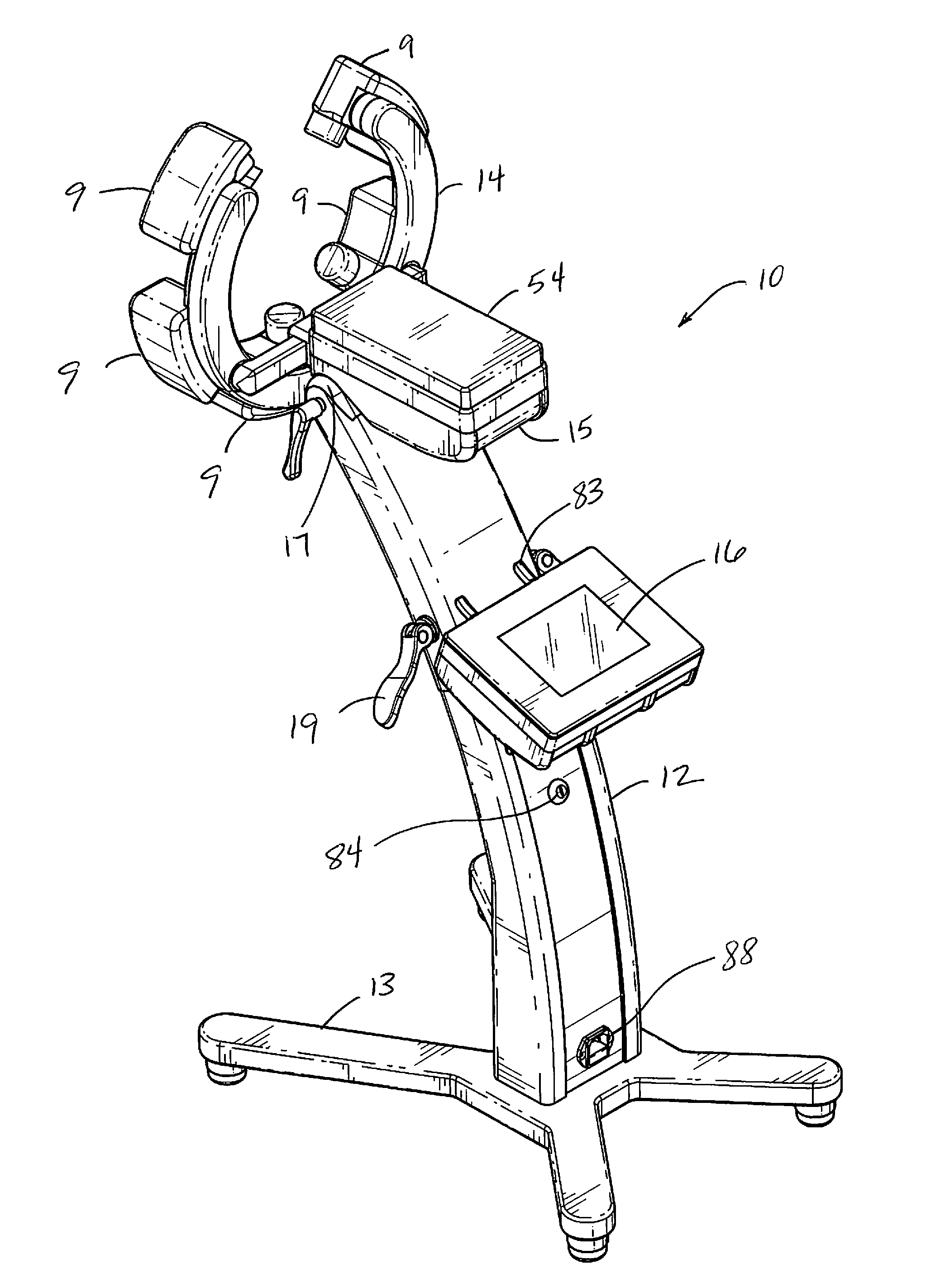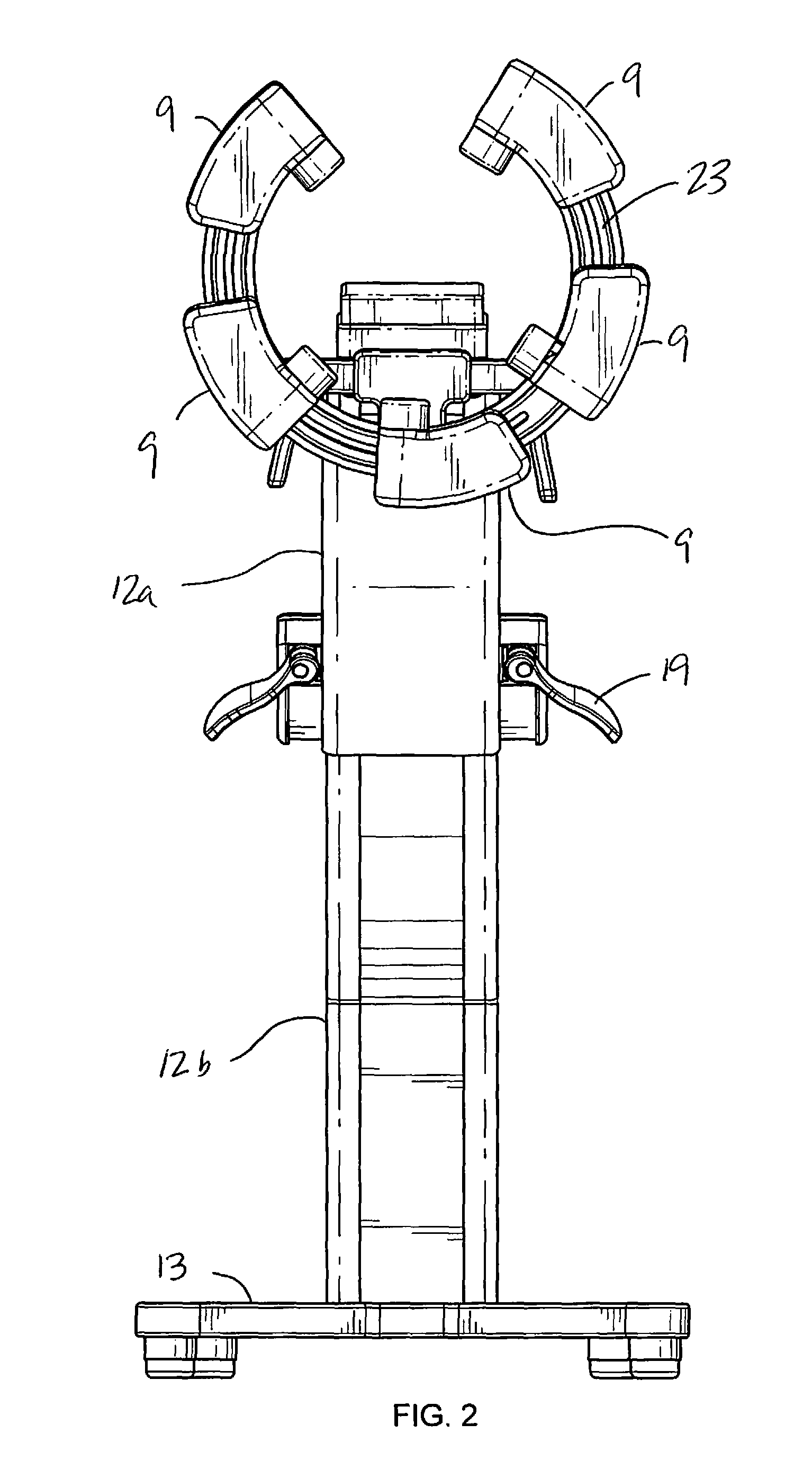Low level laser therapy device with open bore
a laser therapy device and low-level technology, applied in the field of laser therapy devices for treating patients with low-level laser energy, can solve the problems of poor cellulite, no effective cellulite reduction from these options, and no cellulite that responds well to weight loss, creams or surgical liposuction,
- Summary
- Abstract
- Description
- Claims
- Application Information
AI Technical Summary
Benefits of technology
Problems solved by technology
Method used
Image
Examples
Embodiment Construction
[0029]Referring to FIGS. 1-5, the present device, referred to generally as device 10, comprises a laser support 14 having an open bore through which the body part to be treated can be inserted. One or more low-level laser energy sources 11 is connected to the laser support 14, typically by being contained within a laser housing 9 which is directly attached to the laser support 14 using a laser mount 7. The laser support 14 is attached to a stanchion 12. The laser energy sources 11 are controlled electronically and the controls 15 are preferably housed in or attached to the stanchion 12. A computer interface 16 enables the operator to input and receive information about the control and operation of the device 10.
[0030]The laser support 14 serves to retain each laser energy source 11 in its desired position over the area of the patient to be treated. The laser support 14 has an open bore to receive part of a patient's body which is to be treated substantially within the bore. The bore...
PUM
 Login to View More
Login to View More Abstract
Description
Claims
Application Information
 Login to View More
Login to View More - R&D
- Intellectual Property
- Life Sciences
- Materials
- Tech Scout
- Unparalleled Data Quality
- Higher Quality Content
- 60% Fewer Hallucinations
Browse by: Latest US Patents, China's latest patents, Technical Efficacy Thesaurus, Application Domain, Technology Topic, Popular Technical Reports.
© 2025 PatSnap. All rights reserved.Legal|Privacy policy|Modern Slavery Act Transparency Statement|Sitemap|About US| Contact US: help@patsnap.com



